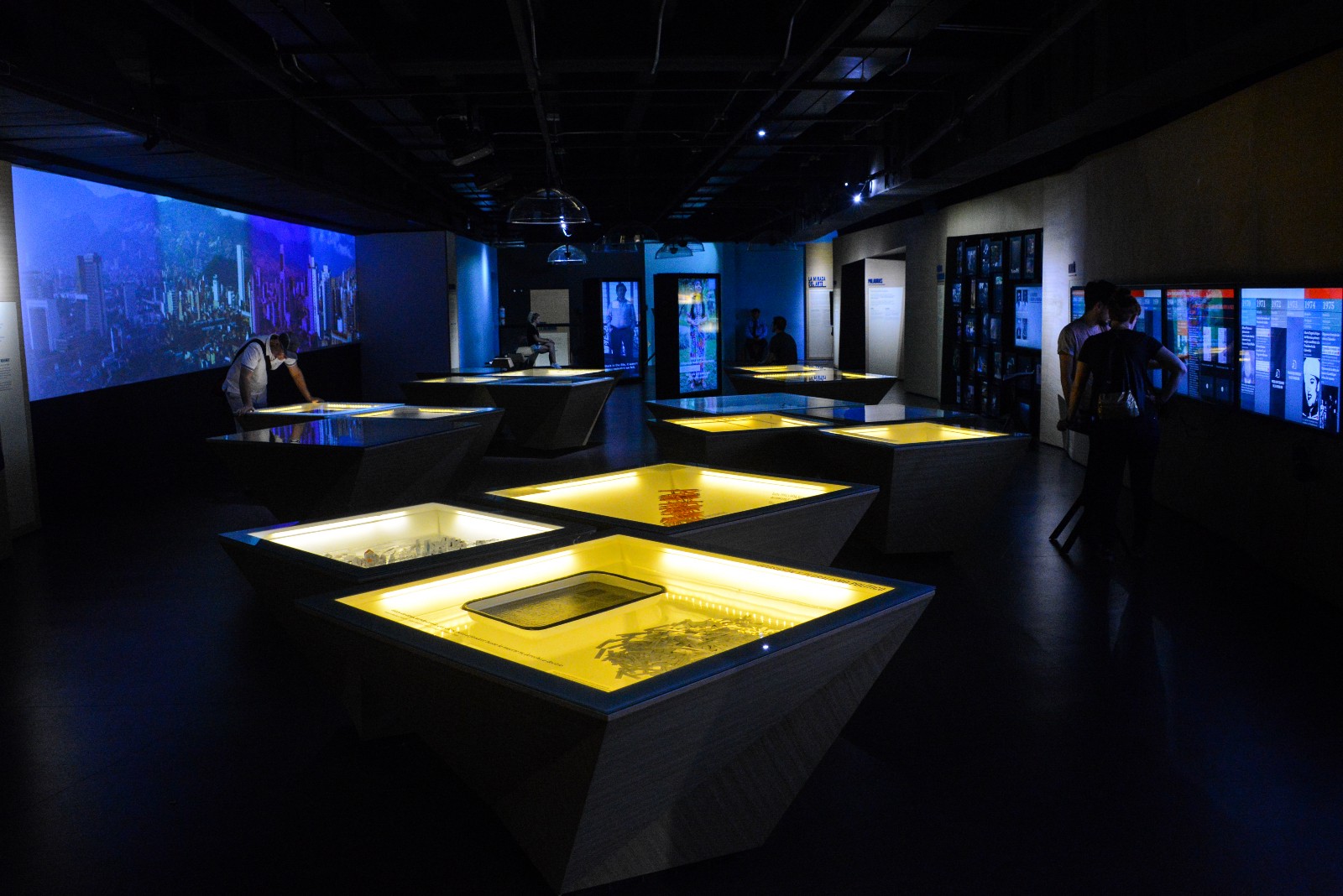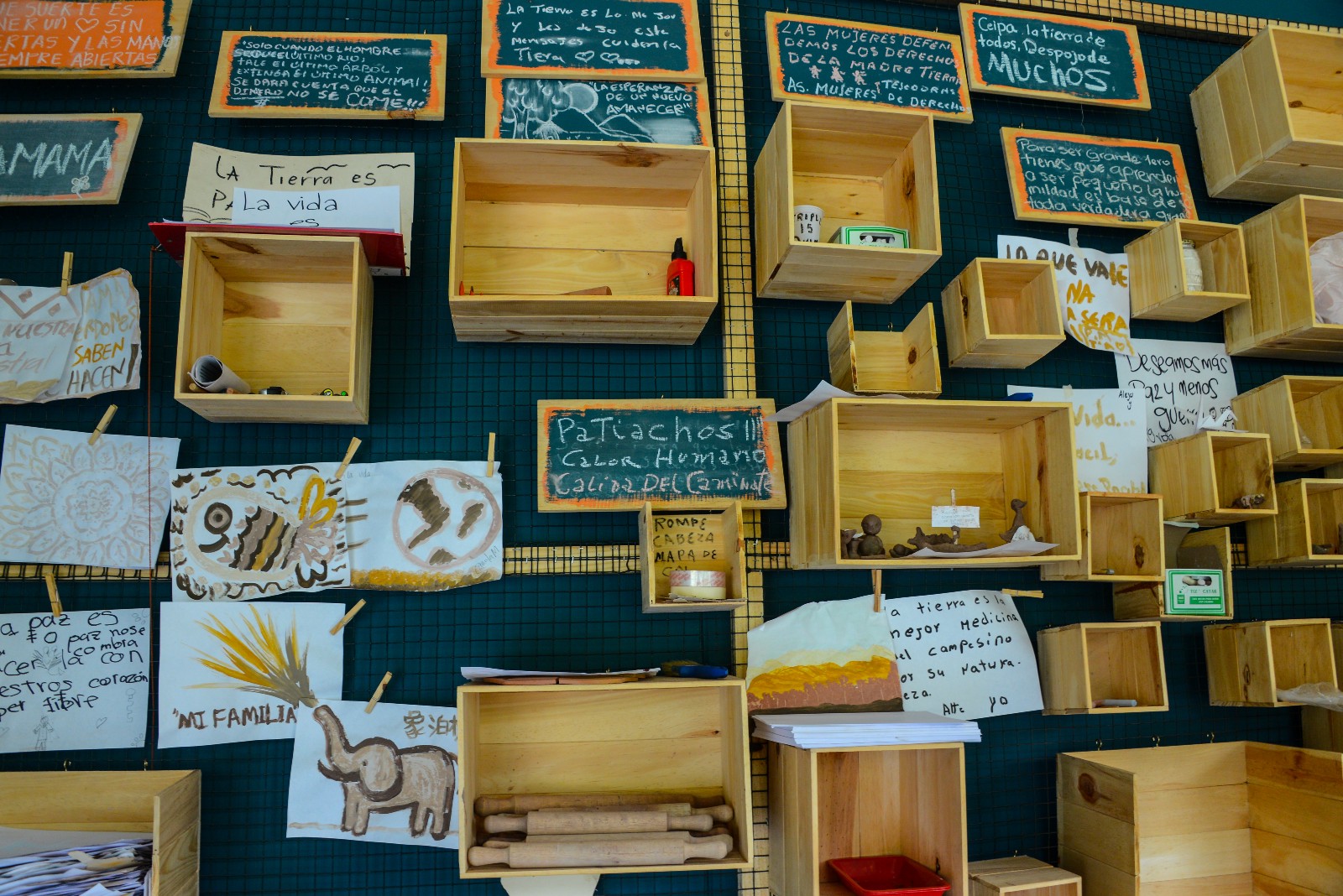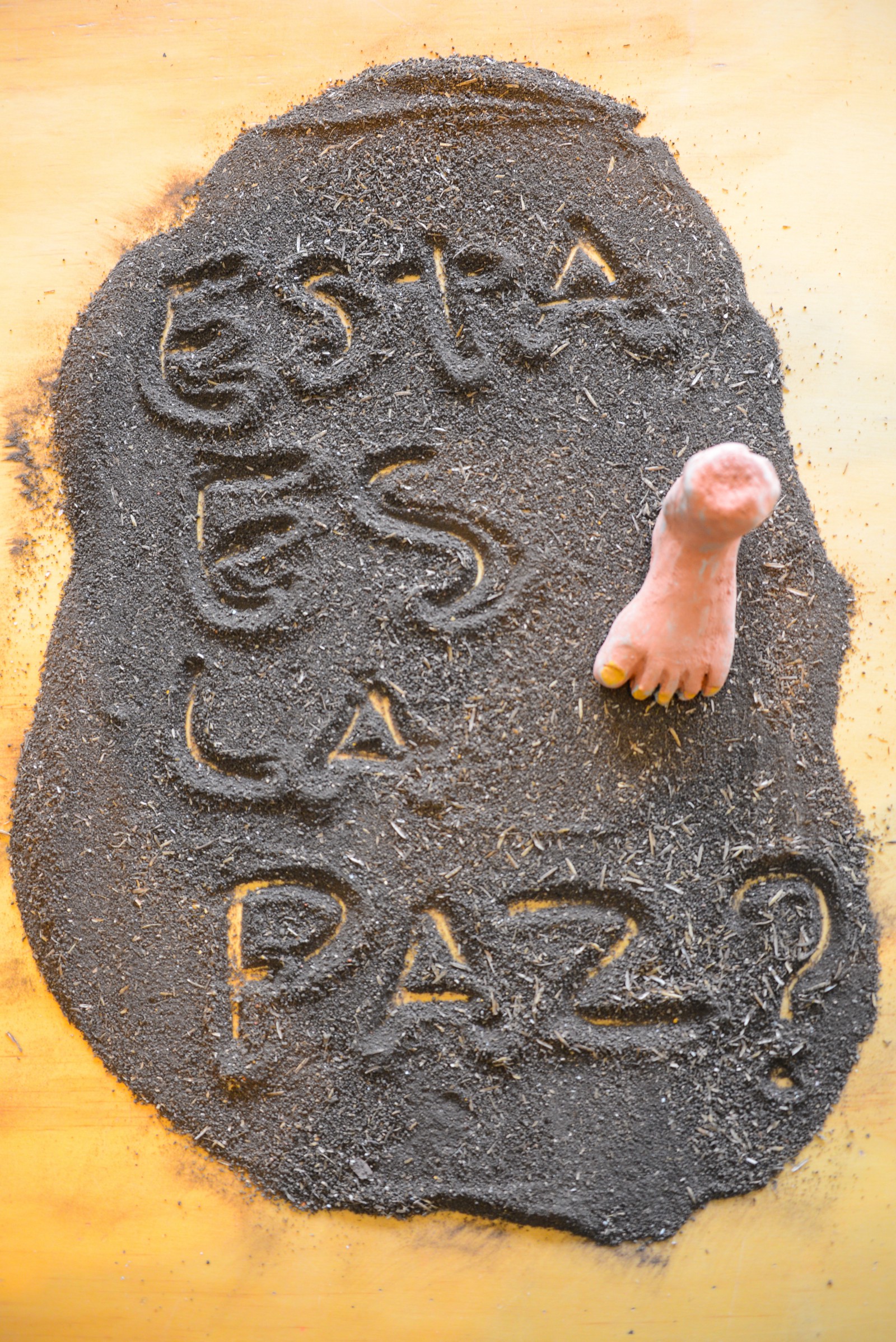How a radically democratic museum experience in Colombia is helping citizens reckon with the history — and ongoing perils — of civil strife.
By Deni Ellis Béchard
(Photo: Deni Ellis Béchard)
Medellín’s transformation — from modest Colombian city, to murder capital, to one of the world’s most innovative urban areas — might be said to have begun in 1948, with a period known as La Violencia, a 10-year civil war that killed approximately 200,000 people and marked the beginning of rapid migration into Colombia’s cities. La Violencia inaugurated the social instability that grew into the Colombian Conflict (1964) and continues today. That war pitted the government against right-wing paramilitary groups, crime syndicates, the FARC (The Revolutionary Armed Forces of Colombia, a Marxist rebel group), and the ELN (the National Liberation Army, a militant organization motivated by Liberation Theology and Marxist values).
In the half-century since, the war has claimed another 220,000 lives — 177,307 of them civilians — and has been the cause of 25,000 kidnappings, an equal number of forced disappearances, and the displacement of 5.7 million people — roughly one-eighth of the population, according to the Council on Foreign Relations, the Latin American Working Group, and el Centro Nacional de Memoria Histórica. Migrations to cities escalated dramatically over that period, and whereas in 1951, Medellin had only 358,189 inhabitants, by 1973 its population had grown to more than a million. Today, its metro area is home to 3.7 million people — only 61 percent of whom were born in the city.
The museum is built on the notion that peace is attainable through an understanding of the historical materials left to us.
In the 1970s and ’80s, amid dire instability, Medellín became the hub of the global cocaine trade, with the city’s cartel, equipped with airplanes, helicopters, and state-of-the-art weaponry, raking in $60 million a week. The Medellín Cartel fought government soldiers, allied with (or else attacked) the paramilitary groups, battled other criminal organizations, and resisted the FARC. By the late ’80s and early ’90s, news organizations, including the Guardian and the Washington Post, had deemed Medellín the most dangerous city in the world, with 381 murders each year per 100,000 people. (By comparison, the city currently with the highest homicide rate is Caracas, Venezuela, with 119 murders per 100,000.) In 1993, Colombian National Police shot and killed the head of the Medellín Cartel, Pablo Escobar, then the wealthiest and arguably most powerful criminal in history.
Over the following two decades, Colombia’s cartels and paramilitary groups were largely dismantled, and though the FARC and ELN remain active today, both have been in negotiation with the government to end the half-century conflict and safely re-integrate their fighters into the larger society. Within the framework of this country-wide recovery, Medellín’s renaissance has been impressive: Since the early 2000s, a series of innovative mayors have built infrastructure and addressed social issues to give displaced populations and former fighters access to education and the economy.
Part of that process has been addressing the traumas of the war — and preventing their repetition. The House of Memory Museum — el Museo Casa de la Memoria — which opened to the public in 2013, attempts to transform the legacy of suffering into a city-wide cultural memory. Like asphalt given form, its gray structure rises from the streets of Medellín’s busy Boston neighborhood. On one side, the museum is so integrated with the plaza and sidewalks that passing it unawares would be easy. On another side, the museum’s two hangar-like entrances open into a park that overlooks a small river. A row of small windows, spaced irregularly, dots the high, inclined walls, suggesting a line of bullet holes or burial niches in catacombs. The pattern strikes the eye as at once arbitrary and determined, organic and man-made.

(Photo: Deni Ellis Béchard)
On the inside, the museum’s wide entrance quickly gives way to a narrow triangular passage, those irregularly spaced windows juxtaposed with images of Medellín’s citizens over the past several decades. A sliding door opens into the permanent exhibit, “Medellín, Memories of Violence and Resistance,” which re-creates the city’s violent history from dozens of different perspectives: photographs, newspaper clippings, conceptual art, touchscreens with interactive timelines, and life-size displays, in which people stand and tell their stories. The museum’s varied multimedia presentations give human voices and faces to Colombia’s complicated history.
In the museum, surrounded by so much of Colombia’s history, I found myself thinking of Gabriel García Márquez — Colombia’s best known author — and how he portrays the effects of memory on the Buendía family in One Hundred Years of Solitude. Many of these characters are burdened by too many memories, fixated on nostalgia for a better past, unable to interact with the world or think of the future, in certain cases preferring to lock themselves away with their memories. Others suffer from amnesia, trapped in an eternal present, repeating their actions over and over, unable to connect with the future.
Like the house at the center of Colombia’s most famous novel, the museum embodies Colombians’ fraught, ongoing negotiation between the past and future. It creates a space in which the people of Medellín can place their memories within the larger story of their country or, for the younger generation, share in the memories of the people who created the country in which they now live. The main exhibit encourages this sense of continuity and connection, with its flowing touchscreen timelines, and its images of the city and its people projected side-by-side on the wall in a long, linked tableau.
A second exhibit deepens this impression of connection to the past and to the land. In keeping with the museum’s interactive spirit, it feels nothing like an exhibit. Rather, the small workshop has wooden tables; box-shelves; potted plants; and containers of seeds, soil, paintbrushes, and other tools. Visitors create art with Colombia’s actual soil, painting in earth tones, making sculptures out of mud, sometimes simply planting seeds. The space allows people to participate in artistic construction, stripping away the boundary between the viewer and the object of art (a boundary that exists in most museums), and emphasizing the notion that peace is attainable through an understanding of the historical materials left to us.

(Photo: Deni Ellis Béchard)
A third exhibit shows short films about displaced people trying to re-create, in the city, the lives they’d enjoyed on farms. The individual departments of Colombia hang from the ceiling in a fractured map that casts onto the floor the shadow of a unified country.
Though other countries have museums for war and memory — including museums commemorating genocides in Rwanda or Cambodia or Europe — Medellín’s House of Memory appears carefully designed so as not to focus on the artifacts of war. It does not overwhelm the viewer with brutality but strikes a balance between conveying historical knowledge while preserving a sense of intimacy with its victims: letting visitors hear spoken stories rather than shocking them with violence. This enables a more balanced reclamation of history, since the present — and the focus on creating peace — feels equally important. The faces on the walls are living, conveying continuity with the vitality of those who went before.
The museum is still under construction, with several more exhibits on the way and plans for a larger pedagogic component, with spaces for students from nearby schools to discuss the violence of the past with an eye toward a peaceful future. Community members are invited to propose installations, and, even in its state of construction, there is a living feeling to the building, a sense that it is more than an archive or repository — that it is growing; that it is ever more deeply rooted in the city.

(Photo: Deni Ellis Béchard)
A walk through the museum shakes visitors out of the passive mode, making them participants rather than viewers as it leads them through rooms of literal and figurative darkness into open, well-lit spaces. The experience is a reminder that the complexity of memory — how it can nourish our identity or encumber us, trap us in the past and paralyze us, or provide tools for our futures — rarely gets discussed as a crucial component of social harmony and well-being. La Casa de la Memoria shows that a museum as a concept can be re-defined for the needs of the people — that it can also be a house to be lived in, and a home for memories that would otherwise become burdens, or else dangerously forgotten ghosts.

||





